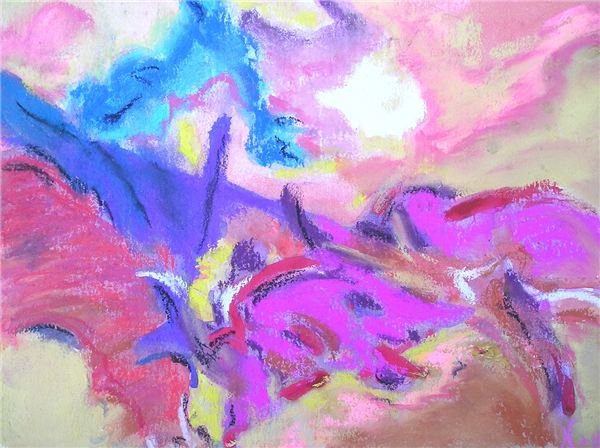Art Lesson on Painting: Exploring Color, Mood & Music
Students respond naturally to colors and sounds. Giving students the materials to make their own connections between the two is a fun way to create without the pressure of representational drawing.
Objective: Students will listen to samples of music and choose colors to create paintings based on the mood of the music samples.
Materials: Music samples, water-based paints, paintbrushes, 3 pieces of large art paper per student, water, paper towels
Lesson Procedure:
Step One: Teacher will set up a painting area for each student. Students should have plenty of access to water and paper towels for this exercise, so that they can quickly clean their brushes between paint sessions.
Step Two: Teacher will explain to students that they will be painting to music. Teacher should briefly discuss mood and color, allowing students to identify which colors they think express emotions and energy. Students are free to assign their own colors to different emotions. Teacher should encourage students to paint with large brush strokes and free forms, rather than trying to paint representational objects.
Step Three: Teacher will play pre-selected samples of music for students, allowing 2-3 songs per paint session. Songs should be grouped by mood or tempo, so that students can continuously paint in one color scheme for each session. As students work, teacher should encourage them to fill the entire page with paint.
Suggestions: Teacher may want to limit songs that have words (or use songs with words in foreign languages instead of native language) so that students do not get caught up in trying to paint what they think the song is about. Some fun music examples include music from different cultures (Celtic drums, music from the Andes, Japanese fan dancing, Native American chants are all great examples of cultural music that have differing moods and levels of energy). Classical music, instrumental movie music, or songs from different decades can also be grouped together to get students’ brushes moving.
Step Four: After each painting session, students can start fresh on a new piece of paper while their previous pieces dry. Once all of the pieces have dried, ask students to tape their works on the wall or board, grouping them according to painting session.
Step Five: Teacher will lead students in a discussion of the posted works from each session, allowing them to describe the types of music they heard, what emotions the music inspired, and how their choices of color and form fit the emotions they felt from each piece. Teacher should have titles of songs and names of musicians available for students who may have heard some new music they would like to explore more on their own.
Assessment: Teacher will ask students to write a short journal entry or paragraph explaining what different colors represent to them in terms of mood and energy, and how they can use music to give them creative inspiration for future painting sessions.
This activity can be used with almost any age group, at any time of the year and as often as the teacher wishes to get students to have an enjoyable, fear-free creative experience!
